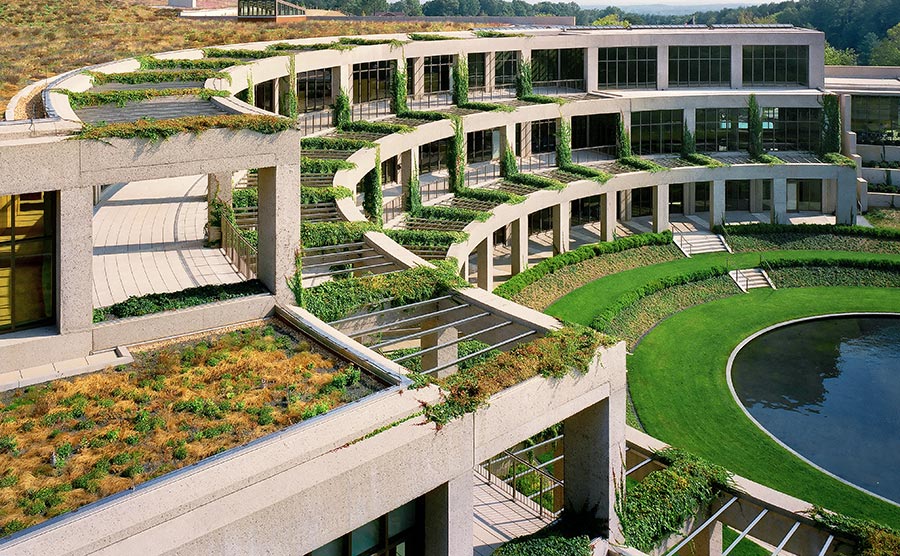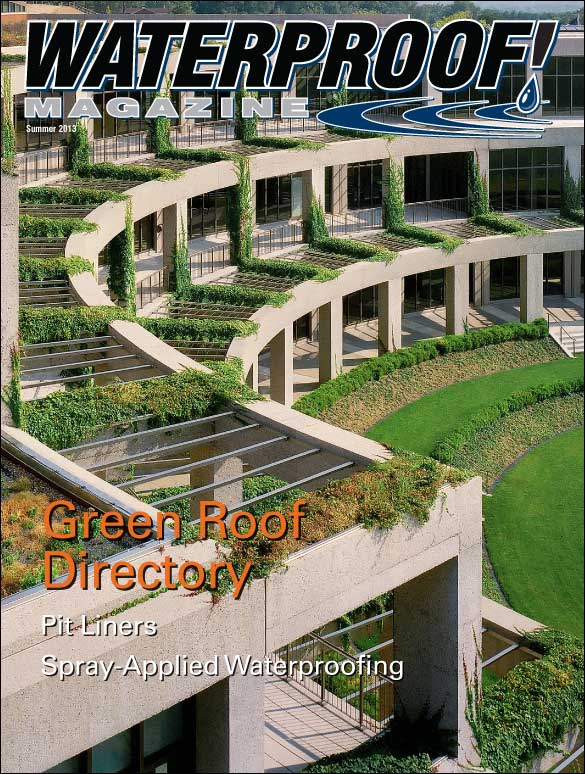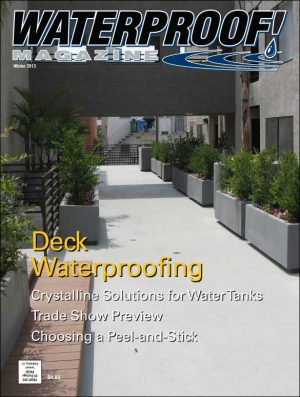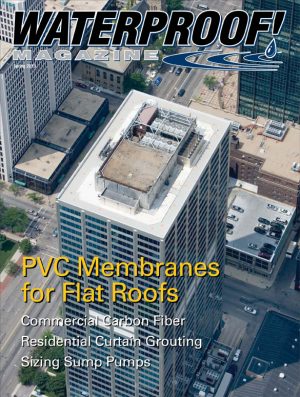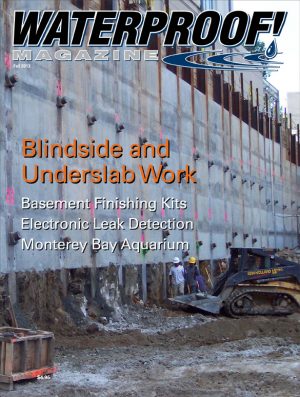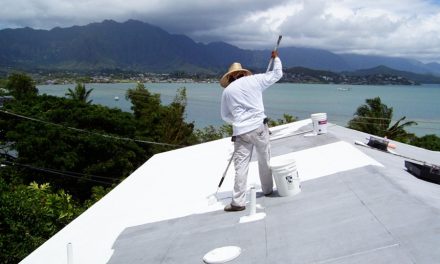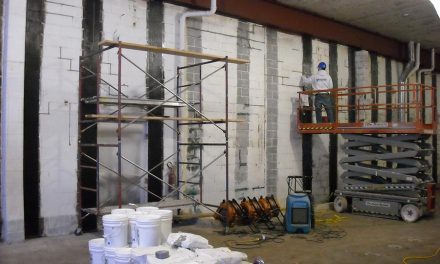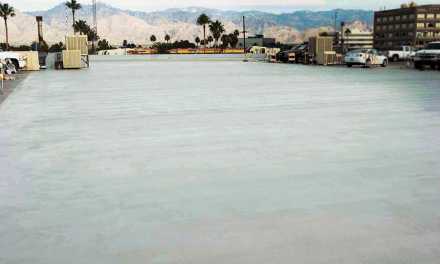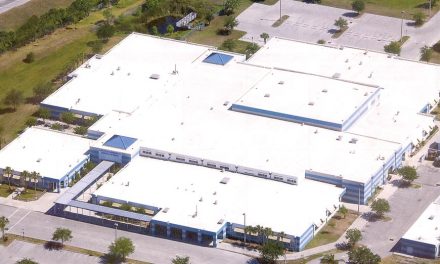One of the largest green roofs built in the past decade covers the audio-visual archives of the Library of Congress in Culpepper, Va, about 70 miles southwest of Washington D.C.
The vegetated portion of the roof covers 228,000 sq. ft.—almost 5 ½ acres—making it one of the largest green roofs east of the Mississippi River.
About 75% of that area is “extensive” green roof, with soil depths up to 10 inches and covered in sedum and grasses. The remaining 82,000 sq. ft. of roof has soil depths up to four feet deep and supports all sorts of plants, including shrubs and trees.
The project is so immense—it features 9,000 trees and nearly 200,000 individual plantings—that it qualifies as one of the largest reforestation projects on the eastern seaboard.
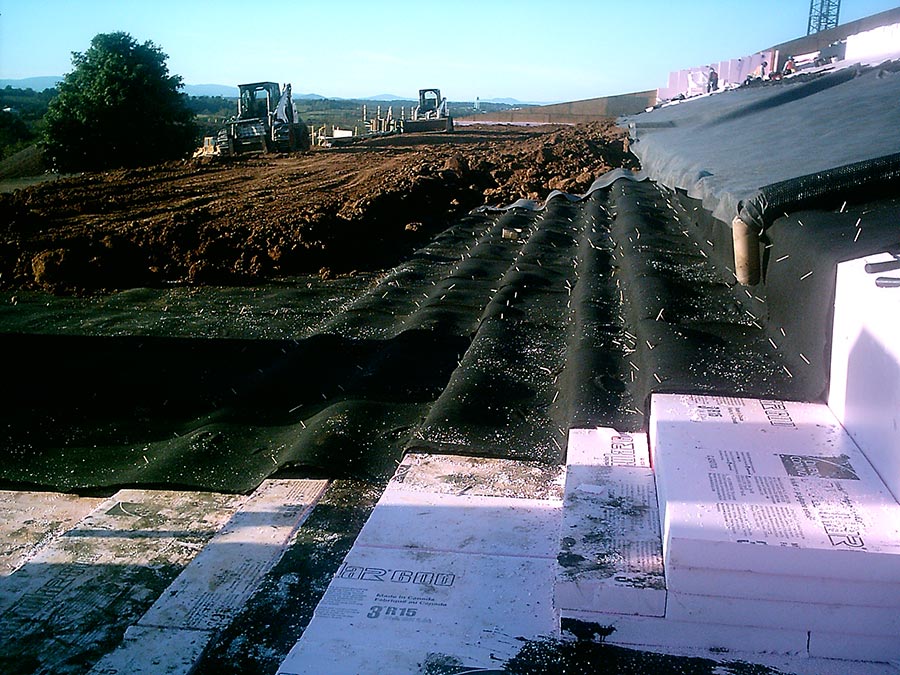
A pre-fabricated drainage composite was installed over the insulation and under the growth media board. J-Drain 300 was chosen since it could withstand the heavy equipment used to install the engineered soil.
Formally named Library of Congress Packard Campus of National Audio-Visual Conservation Center, the facility was originally built as a nuclear fallout shelter in the 1960s for federal banking officials and their families. It also stored $3 billion in cash meant to replenish currency supplies east of the Mississippi in case of a nuclear attack.
After deactivation in 1992, the buildings’ temperature-controlled vaults attracted the interest of the Packard Humanities Institute, a private foundation concerned with the preservation of film and broadcast material. In 1997, President Clinton signed off on plans for a public/private partnership to remodel the bunker into the world’s foremost audio-video repository and restoration facility.
Renovation began in 2003, and was completed in 2007 at an estimated cost of $150 million. About 80% of the 415,000-sq. ft. facility is underground.
The former bunkers are now lined with more than 90 miles of shelving holding 11 million items, some created personally by Thomas Edison. The old cash vaults deep below the surface provide safe storage for vast amounts of potentially explosive nitrate film used in the early days of cinema, (gradually being transferred to safer mediums).
The central three-story Conser-vation Building emerging from the hillside is new. It contains state-of-the-art preservation laboratories, offices, a 200-seat theater, and conference facilities, as well as a 135,000-sq.-ft. library and museum.
The below-ground portion of the building efficiently maintains the precise climate control needed by an archival storage facility. The massive green roof contributes to this. SWA, the landscape architectural firm, reports that the vegetated roof will keep temperatures constant for up to two weeks in the event of a long-term power outage.
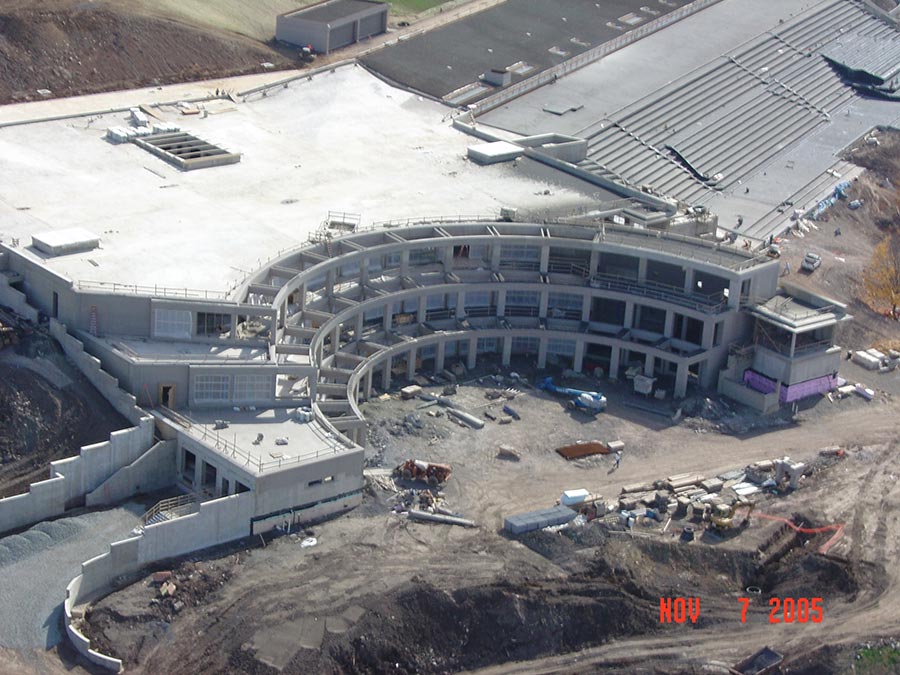
Originally, designers planned on reusing native soils on the roof. However, it proved to be unstable when wet. To resolve this issue, the sloped portions of the roof were built up into stair-steps using lightweight concrete, and the dirt was replaced with engineered PermaTill growing media.
To ensure adequate drainage, J-DRain 300, a pre-fabricated geonet drainage composite was laid between the multiple layers of insulation board. Janet Faust, Greenroof Product Manager, at JDR, says, “This is a unique product in that it provides lift to the insulation board, two-way drainage and a high compressive strength that allows vehicular traffic. This was important as it needed to withstand the heavy equipment used to install and move the engineered soil.” The project also used J-DRain GRS, which has a root resistant top fabric, 1”-drain core and water retention capability which can be critical to plant survival.
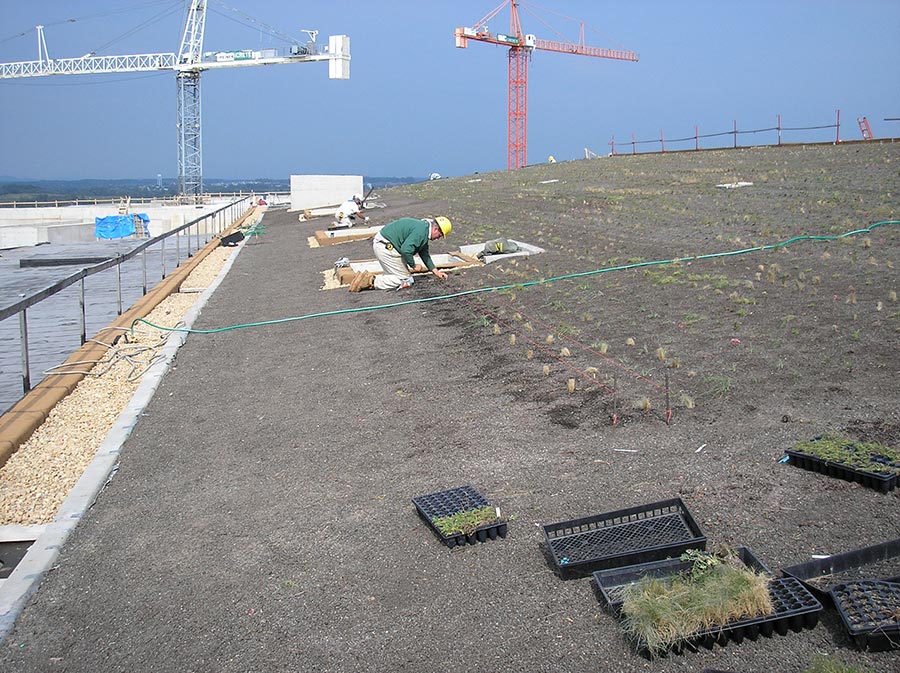
To ensure the integrity of the waterproofing membrane, an electric leak-detection system was installed. Marketed and installed by International Leak Detection, it uses a low-voltage electrical current to pinpoint the exact location of leaks even beneath several feet of soil and plants.
Chris Eichhorn, president of ILD, states “The EFVM [Electric Field Vector Mapping] test was performed during the construction phase prior to the installation of the vegetation layers. In addition, we re-tested some of the areas following the overburden installation that were suspected of having moisture problems. The EFVM test concluded that the membrane was watertight, and the moisture came from other sources.”
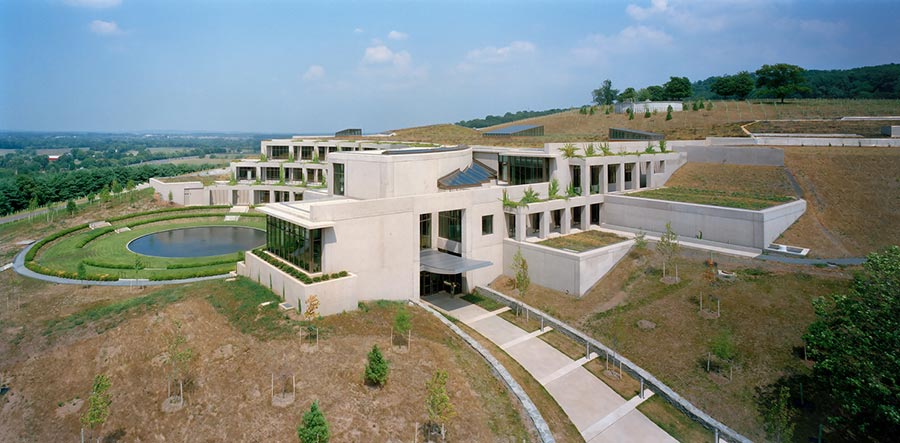
Covering almost 5 ½ acres, the green roof and surrounding landscape features 9,000 trees and nearly 200,000 individual plantings.
He continues, “Without having the EFVM conductors in place, the contractor would have been forced to remove the layers of overburden to perform a visual inspection of the membrane. EFVM was able to test all the waterproofing membrane installed on the walls on the project as well.”
The EFVM conductor wires were left in place and will allow for future testing or monitoring when required.
It took just one season for the plants to completely cover the roof and sides of the building.
The finished building and roof have received numerous awards, including Mid-Atlantic Construction Magazine’s Overall Project of the Year for 2007 and the 2007 Green Innovation Award – Best Green Commercial Project.
With plants growing for five years now, the green roof is well established. Chuck Friedrich, the Carolina Stalite executive that provided the engineered growing media reports, “The project now is a magnificent thing of beauty. In the spring it is an array of color.”
If readers would like to see for themselves, The National Audio-Visual Conservation Center is open to the public. Access to all programs at the Campus, including viewing the green roof, is free.
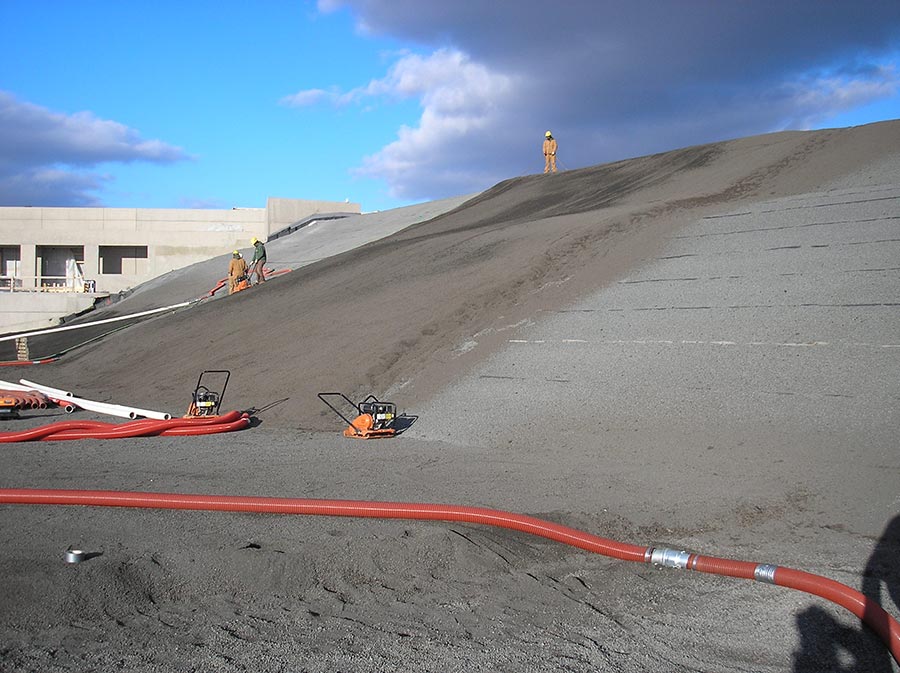
Summer 2013 Back Issue
$4.95
Advances in Basement Coatings
Library of Congress Green Roof
Industrial Pit Liners
Green Roof Directory
AVAILABLE AS DIGITAL DOWNLOAD ONLY
Description
Description
Advances in Basement Coatings
New developments in spray-applied membranes include products with instant cure times, achieve virtually any thickness in one coat, and offer unprecedented flexibility and performance.
Library of Congress Green Roof
The Library of Congress is the largest library in the world. And the roof of its Virginia facility—covering more than 225,000 sq. ft.—is one of the largest green roofs in the world.
Industrial Pit Liners
Storing everything from mining slurry to sewage, it’s absolutely essential that the membranes and liners be absolutely waterproof despite the often corrosive nature of the contents.
Green Roof Directory
Categorized by the products and services offered, this is a comprehensive list of products, services and companies servicing the vegetated roof industry.
Additional Info
Additional information
| Magazine Format | Digital Download Magazine, Print Mailed Magazine |
|---|

